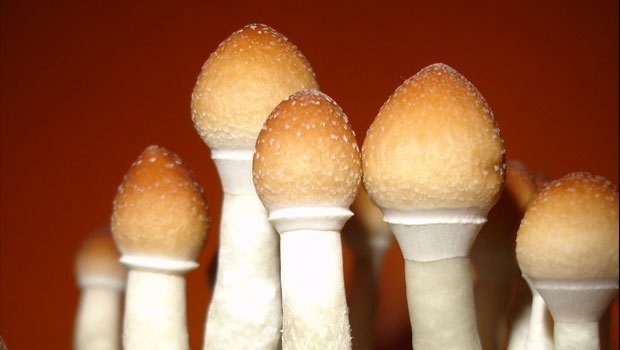
Psilocybin is the chemical in magic mushrooms that is responsible for causing the user to have a sensory overload. Very often this involves seeing an array of saturated colors and patterns. Recent research has discovered that this effect occurs because the brain becomes “hyperconnected” and this allows for increased communication between different regions.
Researchers hope that this ability can be manipulated in a way that would allow for the manufacture of drugs that would treat neurological conditions.
A paper published in an open access format in the Journal of the Royal Society Interface with Giovanni Petri of Italy’s ISI Foundation serving as lead author, goes into great detail about how Psilocybin affects the brain.
Psilocybin works by binding the same receptors in the brain as the neurotransmitter serotonin.
This is what causes a change in mood. Many people have a happy, meaningful experience, while some experience a “bad trip” and experience severe paranoia.
Prior studies have found that that getting high on psilocybin doesn’t just create a colorful, psychedelic experience for a couple of hours; it can cause neurological changes that last over a year. These changes often result in a personality that is more open, creative and happier overall. Some people report these effects as lasting over a year and beyond after receiving psilocybin.
Previous research had determined that psilocybin decreased brain activity. Some recent studies have used functional magnetic resonance imaging (fMRI) to see what is really happening in the brain when a person takes psilocybin.
One study used 15 participants with prior positive experiences with hallucinogens to avoid a bad trip inside the enclosed machine. Half of the participants received psilocybin, while the other half received a placebo.
The researchers saw that upon receiving psilocybin, the brain actually re-organized connections and linked previously unconnected regions of the brain. These connections were not random, but appeared very organized and stable. Once the drug wore off, the connections returned to normal.
“We can speculate on the implications of such an organization. One possible by-product of this greater communication across the whole brain is the phenomenon of “synesthesia”, which is often reported in conjunction with the psychedelic state,” the authors of the study reported.
Synesthesia is the subconscious pairing of two things, like colors and numbers. A person who experiences this phenomenon might always view the number 7 as yellow or read 2 and think of the color red. Scientists believe that individuals who have these strange associations, while taking psilocybin likely have poor color perception, despite being inundated with the hallucinogenic colors.
Further study is needed to determine how psilocybin creates these changes. Researchers believe that in understanding the drug’s mechanism for temporarily re-wiring the brain and altering mood, it could be potentially formulated into being functional treatment for depression or other disorders, sometime in the future. Much more research is necessary before that could begin to occur, however.
To learn more, read “How Magic Mushrooms Change Your Brain” at iflscience.com.

